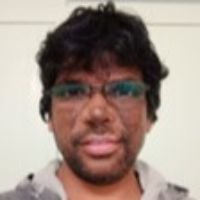Structured Light Beams: Science and Applications
A special issue of Photonics (ISSN 2304-6732). This special issue belongs to the section "Optical Interaction Science".
Deadline for manuscript submissions: closed (15 November 2024) | Viewed by 26475
Special Issue Editors
Interests: laser engineering; laser beam shaping; singular optics; nonlinear optics; beam optics; light–matter interaction; scalar and vector modes; bio-imaging; diffractive optics
Interests: laser physics; laser beam shaping; micro-optics; light–matter interaction; structured lights; non-diffracting beams; phase-locked lasers; diffractive optical elements; metalenses; OAM beams; computer-generated holography; optical imaging; point spread function; apodization
Special Issues, Collections and Topics in MDPI journals
Special Issue Information
Dear Colleagues,
In recent decades, structured light beams have garnered tremendous interest owing to their wide range of applications in all branches of science. The modulations in the transverse intensity and phase of structured light beams provide an extra degree of freedom in light applications. However, the spatiotemporal control of light beams offers a full degree of freedom to generate high-dimensional structured light fields. Further, the combination of polarization and structured light beams produces vector beams with a non-uniform polarization distribution. Well-developed computational and experimental techniques can be realized for use in light beam shaping to acquire the desired high-quality structured light beam for any particular application. Some concrete applications with promising benefits are super-resolution fluorescence microscopy, volumetric bio-imaging, particle trapping, secure optical communication, and the creation of micro/nanostructures on material surfaces.
The Photonics Journal, published by MDPI, is welcoming submissions for a Special Issue entitled “Structured Light Beams: Science and Applications”. This Special Issue is focused on the recent developments in various kinds of structured light beams and their potential impact on applications in the multidisciplinary sciences. As part of this Special Issue, we welcome high-quality research reviews, as well as theoretical, computational, and experimental original contributions on structured light field generation, characterization and their possible role in concrete applications. The topics of interest include (but are not limited to) the following:
- Structured light beam generation using diffractive optical elements;
- Direct generation of structured light beams from the laser cavity;
- Application of structured light beams in biological, chemical, and physical sciences;
- Structured light fields with unconventional propagation characteristics;
- Peculiarities in the generation of high-order harmonics with structured light beams;
- Dielectric metalenses for forming and controlling structured light;
- Non-diffracting light fields in optical communication;
- Ultrashort optical fields in manufacturing and material processing;
- Imaging with exotic light fields.
Dr. A Srinivasa Rao
Dr. Andra Naresh Kumar Reddy
Guest Editors
Manuscript Submission Information
Manuscripts should be submitted online at www.mdpi.com by registering and logging in to this website. Once you are registered, click here to go to the submission form. Manuscripts can be submitted until the deadline. All submissions that pass pre-check are peer-reviewed. Accepted papers will be published continuously in the journal (as soon as accepted) and will be listed together on the special issue website. Research articles, review articles as well as short communications are invited. For planned papers, a title and short abstract (about 100 words) can be sent to the Editorial Office for announcement on this website.
Submitted manuscripts should not have been published previously, nor be under consideration for publication elsewhere (except conference proceedings papers). All manuscripts are thoroughly refereed through a single-blind peer-review process. A guide for authors and other relevant information for submission of manuscripts is available on the Instructions for Authors page. Photonics is an international peer-reviewed open access monthly journal published by MDPI.
Please visit the Instructions for Authors page before submitting a manuscript. The Article Processing Charge (APC) for publication in this open access journal is 2400 CHF (Swiss Francs). Submitted papers should be well formatted and use good English. Authors may use MDPI's English editing service prior to publication or during author revisions.
Keywords
- structured light beams
- singular optics
- nonlinear optics of structured light
- bio-imaging
- optical communications
- structured light-matter interaction
- laser beam shaping
- holography
- incoherent imaging
- material manipulation with structured light
Benefits of Publishing in a Special Issue
- Ease of navigation: Grouping papers by topic helps scholars navigate broad scope journals more efficiently.
- Greater discoverability: Special Issues support the reach and impact of scientific research. Articles in Special Issues are more discoverable and cited more frequently.
- Expansion of research network: Special Issues facilitate connections among authors, fostering scientific collaborations.
- External promotion: Articles in Special Issues are often promoted through the journal's social media, increasing their visibility.
- Reprint: MDPI Books provides the opportunity to republish successful Special Issues in book format, both online and in print.
Further information on MDPI's Special Issue policies can be found here.






